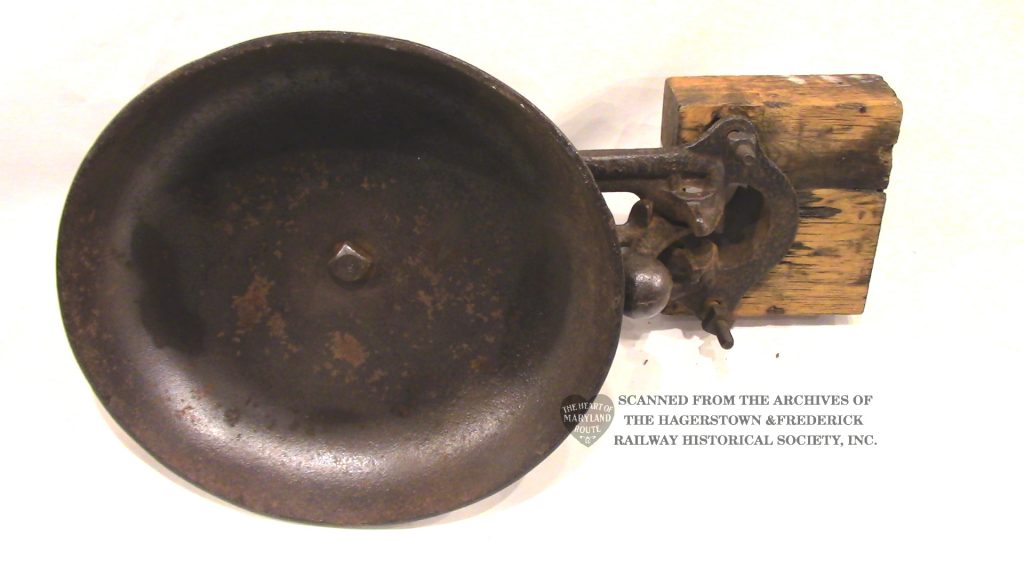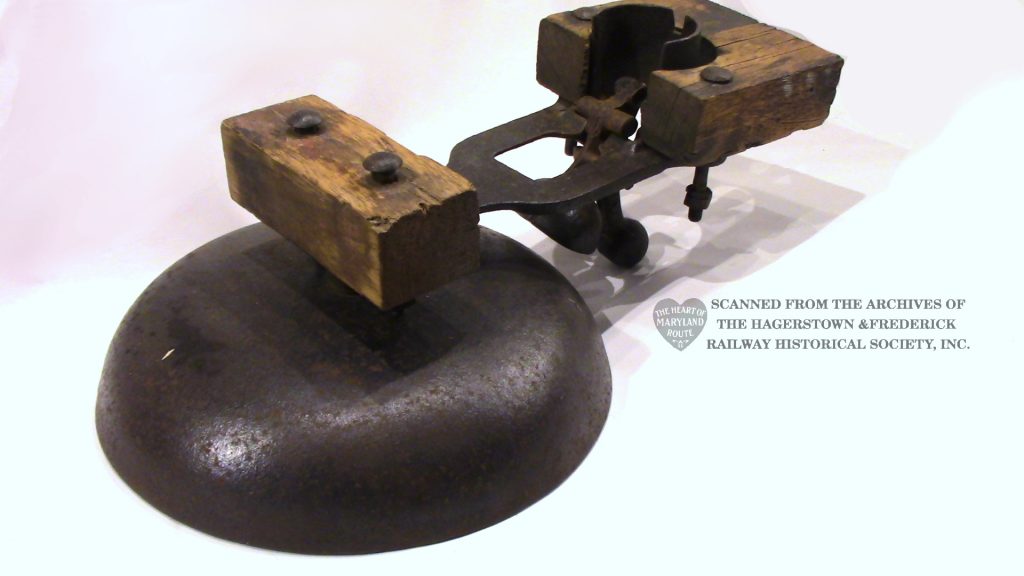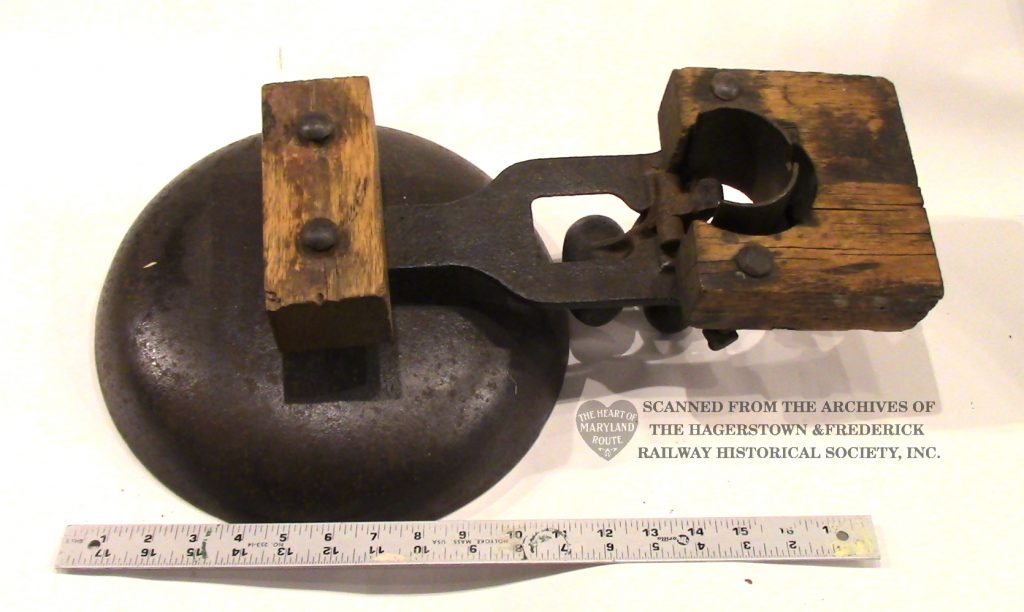Trolley Bells & Whistles
“Clang, clang, clang went the trolley, Ding, ding, ding went the bell…”
The lyrics immortalized by Judy Garland’s performance in “Meet Me in St. Louis” accurately describe the sound of a trolley preparing to start moving. Most trolleys, both streetcar and interurban, have two entirely different sets of bells. Trolleys were also equipped with whistles and in the late 1940s several of the trolleys were given air horns similar to modern diesel locomotives.
Air Whistle

The whistle seen in the display case was removed from H&F #172 when the gong bell was removed. This whistle operated off of the air system that also controlled the brakes on the trolley. A small valve at the control area was pressed by the driver to allow air to the whistle.
In later years of trolley operation, safety laws required the air whistle to be accompanied by a louder air horn.
We hooked this whistle up to an air tank, here is what it sounded like:
Trolley Gong

The bell you see on display at the Trolley Station is a Gong bell. This particular bell is confirmed to have been removed from H&F “Last Trolley” #172 and was accompanied by a letter (shown right) in the handwriting of Potomac Edison President R. Paul Smith granting Carroll James permission to remove the bell.
These bells were mounted under the floor of the trolley at each end of the car and operated by stepping on a small round petal, or “plunger”, embedded in the floor. These bells were used to tell pedestrians and vehicles outside of the trolley that it was about to cross a street or was about to move. Sometimes the bell was also used to communicate with other railroad employees outside of the trolley and different sequences of ring could send particular messages.




These bells were the kind most often heard.
Hear a newer recording of this bell ringing:
Listen to audio of #172 operating in the 1950s with bells in active use:
Ceiling Bells
Inside of the trolley would be a smaller pair of bells suspended from the ceiling above the operator’s controls on each end of the trolley. These bells were connected by a rope suspended from the ciling along the entire length of the trolley and were operated by pulling on the rope from the opposite end of the car.
These bells were not used by passengers to say they wanted to get off as many assume, but were instead a way for crews to communicate with each other. Different numbers of rings allowed the conductor at the back of the car to give various instructions to the driver at the front without needing to shout over passengers in the days before radios were used on the trolleys.
